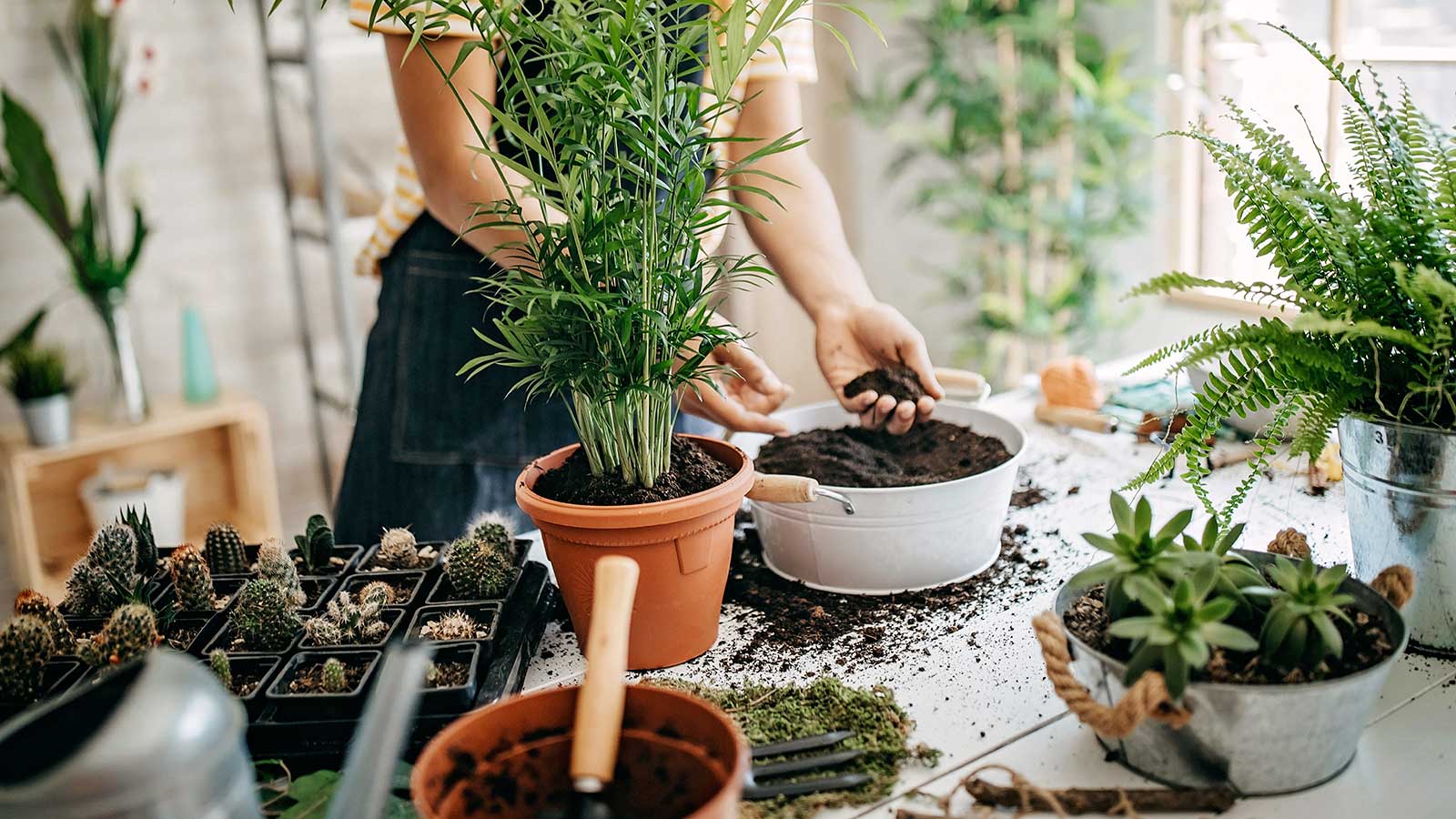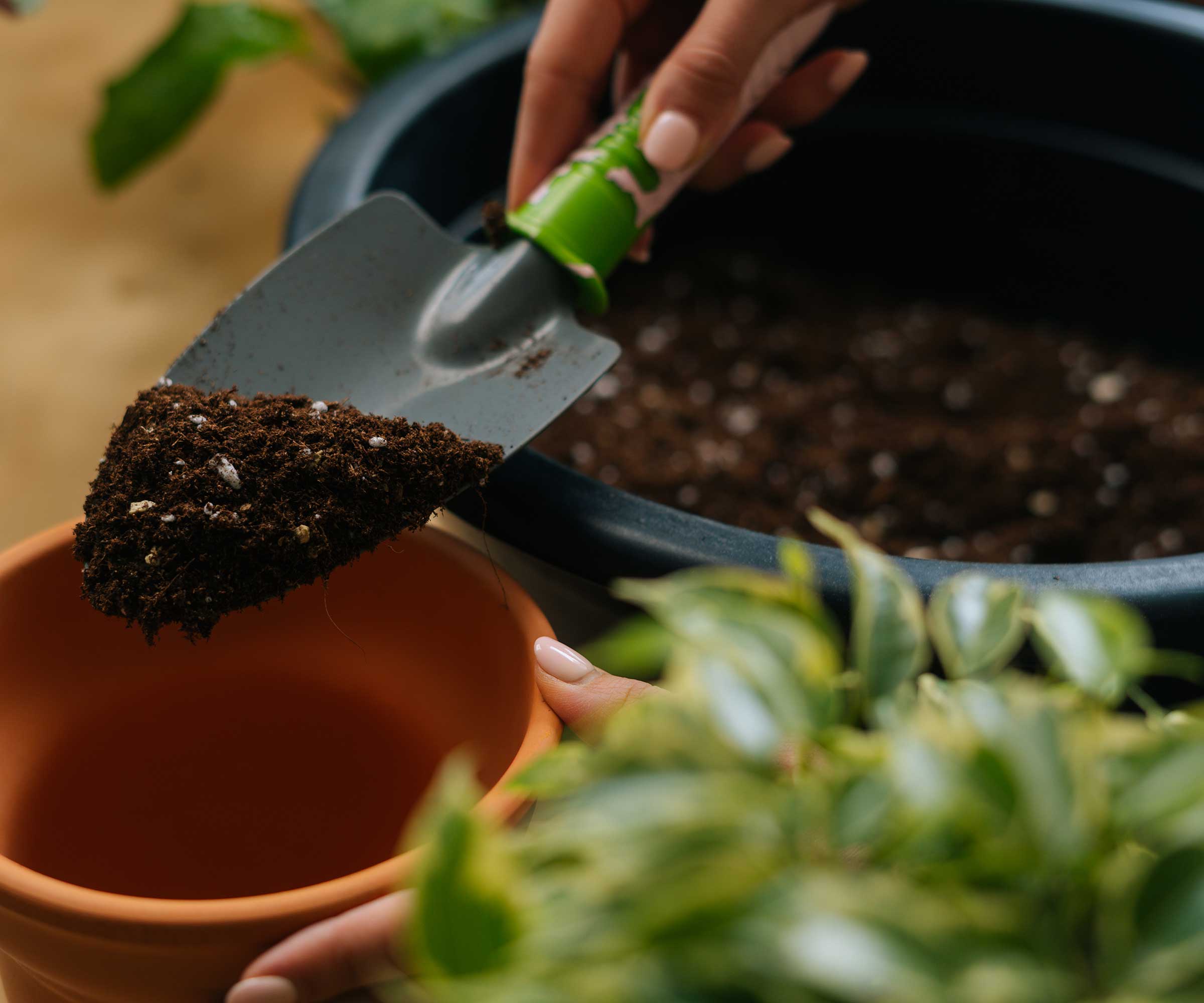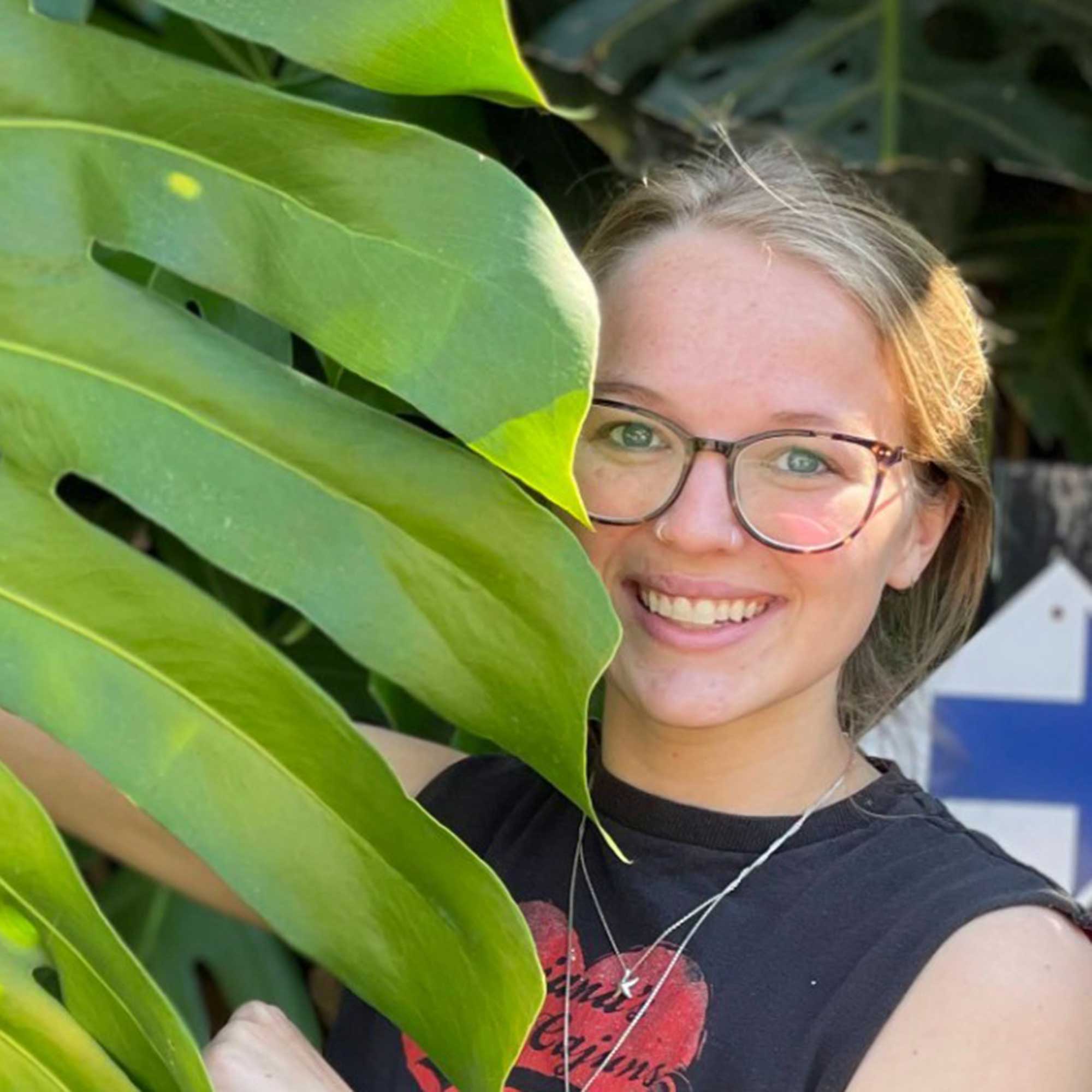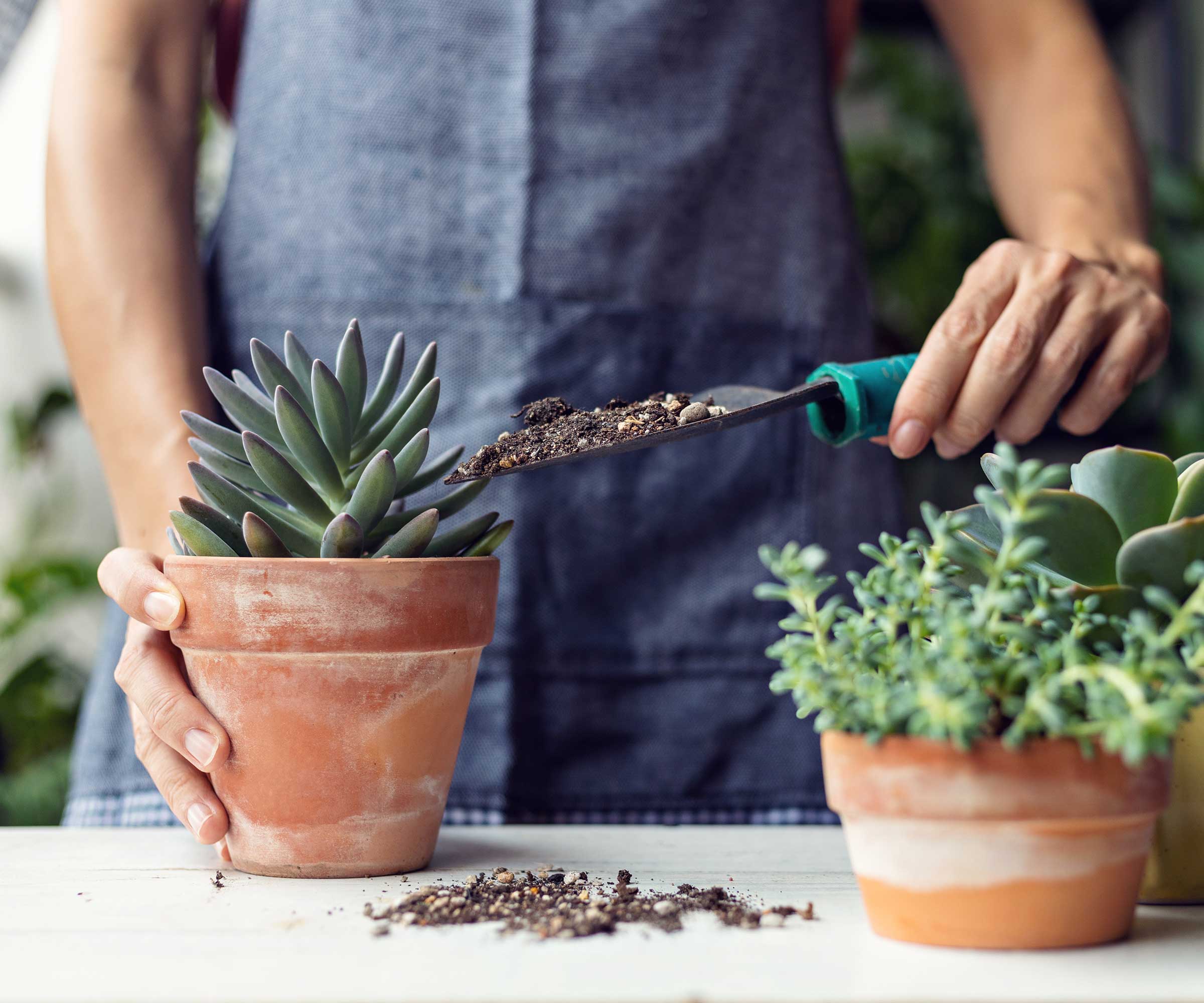What is the best potting soil for indoor plants? Experts share helpful tips
Using the right potting soil is fundamental for happy and healthy houseplants, whether you're buying a pre-made mix or making your own


We all know proper watering and sufficient light are key for houseplant happiness. But, the soil you put them in is also important. The wrong type can lead your indoor plants to develop unhealthy roots and struggle to flourish, so it shouldn't be overlooked.
According to Kiersten Rankel, an expert from plant-care app Greg, an ideal potting mix holds onto just enough water to keep your plants hydrated, but not so much that their roots drown. 'It will also have plenty of air pockets, so your plants' roots can breathe easy,' she says.
The good news is there are plenty of commercial mixes available, and it's also possible to make your own blend.

Using the optimal potting soil for your plants will help them thrive
How to make your own houseplant potting mix

You can tailor your potting mix to suit different types of plants
To make your own basic potting soil for indoor plants, Kiersten recommends combining one-third coco coir to retain moisture, one-third perlite or vermiculite to speed up drainage, and one-third store-bought potting soil or compost for nutrition. 'You can always adjust the ratios based on what your specific plants prefer – think of it like tweaking a recipe to suit your taste,' she says.
For instance, desert plants like succulents and cacti need a mix that's extra chunky and quick-draining, Kiersten continues. In these instances, aim for a blend that's mostly perlite (or you can use pumice or coarse sand), with a smaller amount of organic matter mixed in. 'This will help prevent their roots from sitting in water and rotting.
'On the flip side, tropicals like ferns and carnivorous plants are total moisture-lovers,' she continues. 'They prefer a potting mix that stays evenly damp, similar to the environments they call home.' For these thirsty plants, you can use a bit more coco coir in your mix, she says.
Top tip: Holly Mixon, the owner of Itty Bitty Trees, says adding a little beneficial mycorrhizal fungi to the potting mix can help with houseplant establishment and nutrient uptake.
Design expertise in your inbox – from inspiring decorating ideas and beautiful celebrity homes to practical gardening advice and shopping round-ups.

Holly Mixon is the owner of Itty Bitty Trees, a houseplant store in Paris, Tennessee. Holly's passion for horticulture extends from tropical landscapes to bonsai and interiorscape. Through her store, she cultivates a vibrant community of plant enthusiasts, offering expert guidance and curated selections of greenery.

Kiersten Rankel is a certified Louisiana Master Naturalist and regularly volunteers with local community gardens and nonprofits to help restore critical ecosystems along the Gulf Coast. She earned her master's degree from Tulane University in Ecology and Evolutionary Biology after her undergraduate degree in Environmental Biology, also from Tulane. In her spare time, she enjoys hiking and tending to her 150+ houseplants and vegetable garden.

Succulents need a very well-draining potting mix
Anastasia Borisevich of Plantum notes that while orchids and bromeliads are tropical inhabitants, they’re also epiphytes, which means they need a well-draining growing medium rather than a dense and fertile one. For these types of plants, she recommends combining equal parts pine bark and coconut coir, with a smaller amount of perlite.
Whatever types of houseplants you're growing, it's crucial to stick to proper watering practices and use suitable containers. 'Even the perfect growing medium can get soggy without proper drainage,' Anastasia says. 'Choose pots with drainage holes so that excess water can escape into a saucer, preventing waterlogging and root rot.'

Anastasia Borisevich is a resident plant expert for the Plantum app that helps users identify plant species, diagnose their conditions, and get specific care advice.
Shopping for pre-made potting soil

Many pre-made mixes are available for potting up houseplants
Buying pre-made potting soil for houseplants is often more convenient than making your own. Look for ones designed for indoor use. A well-rated example is the indoor plant soil from Perfect Plants Nursery at Amazon, which includes perlite for good drainage.
Mixes designed for specific types of plants are also available, such as the Wonder Soil cactus and succulent potting mix from Amazon, or the Better-Gro mix for orchids.
Holly highlights how sustainability is a big seller for her when selecting a commercial mix. 'Coconut coir is a great replacement for peat moss, as peat is a non-renewable resource,' she says. If you can, purchasing locally-made soil is also a good option, she adds.
FAQs
Should you add fertilizer to houseplant soil?
When fresh, houseplant potting soil will have a good amount of nutrients to keep your plants happy – at least for a while. Over time, these will deplete, so it's worth giving your plant pals a top-up with fertilizer during the growing season. A popular example is the Easy Peasy liquid all-purpose indoor plant food, available from Amazon.
Be cautious when using fertilizer pellets, which often look like small colorful balls, around pets and small children, notes Anastasia. They can cause severe poisoning when ingested, she warns.
Can you reuse houseplant potting soil?
While using a fresh potting mix is ideal when repotting houseplants, it's also possible to revive an old mix by breaking it up with a trowel and adding in some plant food.
If, however, you had a diseased plant previously in the potting soil, or one that suffered from houseplant pests, it's best not to reuse it for other plants. Otherwise, you may spread the problem.
Did you know it's also possible to grow houseplants without soil – for example, with hydroponic gardening? Alternatively, you could opt to grow air plants, which can be displayed in all sorts of creative ways.

Holly started writing about gardening five years ago, and she is a regular contributor to Homes & Gardens. She has also written many gardening features for Woman & Home and Real Homes, too. She has previous experience as a professional gardener, where she helped to plant and maintain private gardens. Holly has also looked after allotment plots over the years and loves to grow her own flowers and veggies from seed. In her spare time, she enjoys visiting local gardens, botanical drawing, and tending to her ever-growing collection of houseplants.